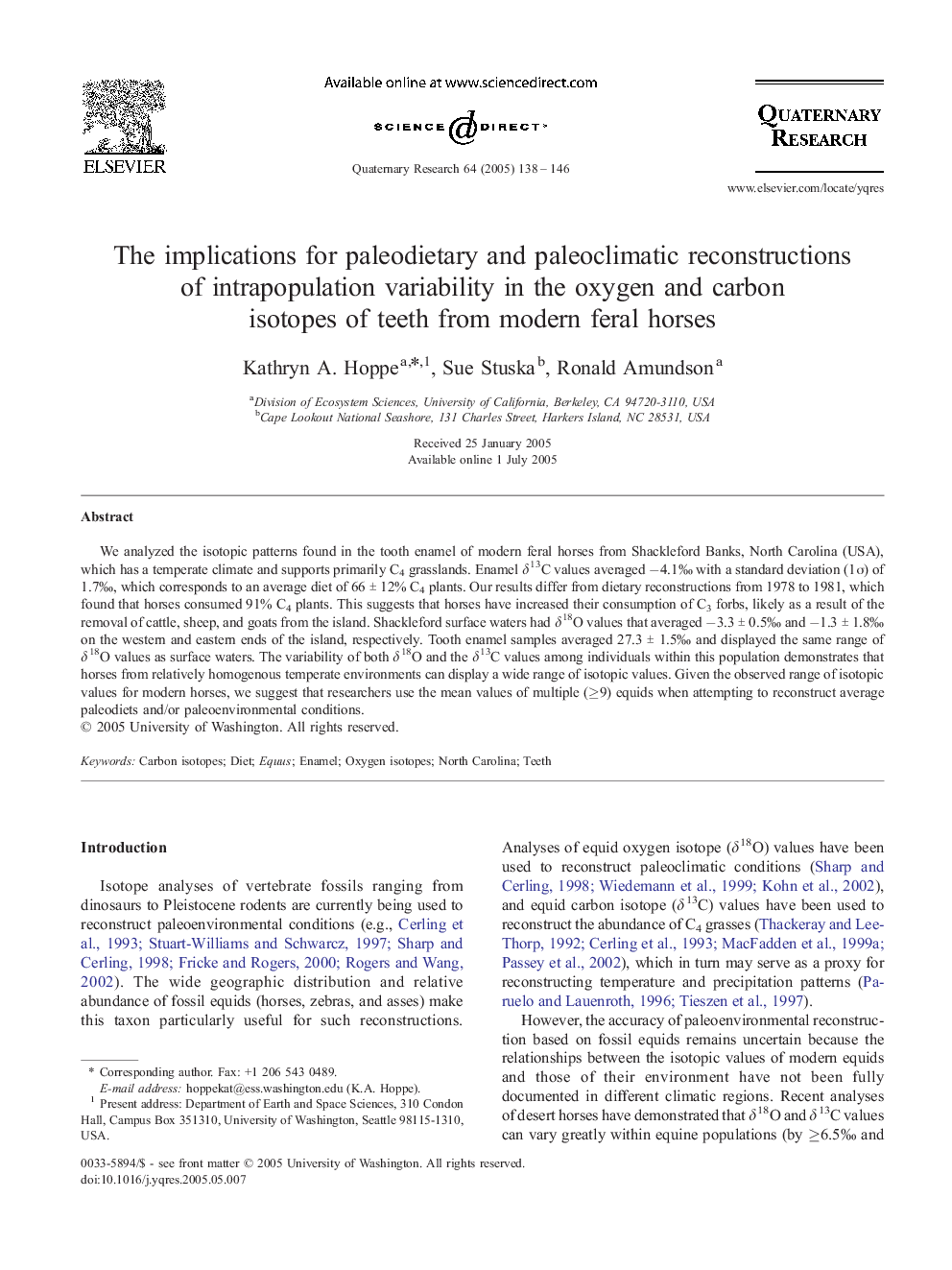| Article ID | Journal | Published Year | Pages | File Type |
|---|---|---|---|---|
| 10501323 | Quaternary Research | 2005 | 9 Pages |
Abstract
We analyzed the isotopic patterns found in the tooth enamel of modern feral horses from Shackleford Banks, North Carolina (USA), which has a temperate climate and supports primarily C4 grasslands. Enamel δ13C values averaged â4.1â° with a standard deviation (1Ï) of 1.7â°, which corresponds to an average diet of 66 ± 12% C4 plants. Our results differ from dietary reconstructions from 1978 to 1981, which found that horses consumed 91% C4 plants. This suggests that horses have increased their consumption of C3 forbs, likely as a result of the removal of cattle, sheep, and goats from the island. Shackleford surface waters had δ18O values that averaged â3.3 ± 0.5â° and â1.3 ± 1.8â° on the western and eastern ends of the island, respectively. Tooth enamel samples averaged 27.3 ± 1.5â° and displayed the same range of δ18O values as surface waters. The variability of both δ18O and the δ13C values among individuals within this population demonstrates that horses from relatively homogenous temperate environments can display a wide range of isotopic values. Given the observed range of isotopic values for modern horses, we suggest that researchers use the mean values of multiple (â¥9) equids when attempting to reconstruct average paleodiets and/or paleoenvironmental conditions.
Related Topics
Physical Sciences and Engineering
Earth and Planetary Sciences
Geology
Authors
Kathryn A. Hoppe, Sue Stuska, Ronald Amundson,
